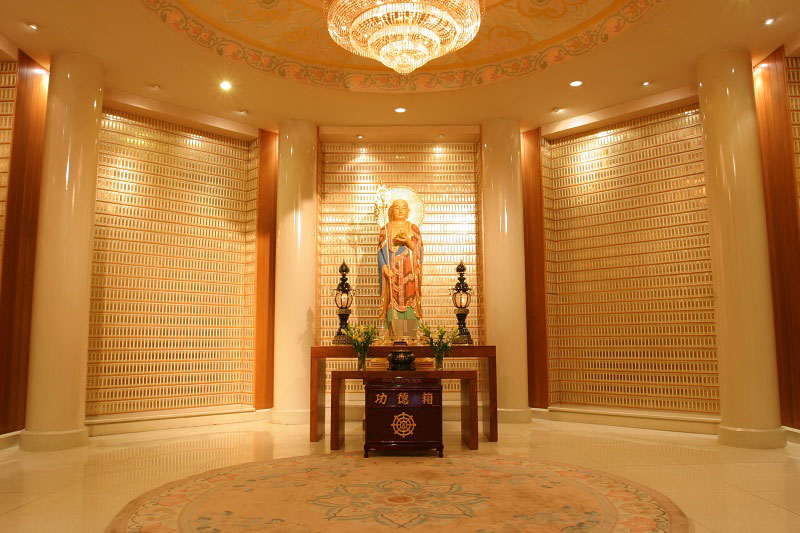|
Pagoda has its origin from the Indian stupa, an ancient type of building used to store sutras and sacred relics of the Buddha. With the spread of Buddhism to China, Chinese architectural elements from gate towers and various wooden structures were gradually incorporated into pagoda design. The seven-tiered style of Nan Tien's Pagoda reflects a similar convention of the T'ang Dynasty (A.D. 618-906). Its tapering design reaching to the sky is synonymous with the idea of practicing Buddhism step-by-step which eventually led to supreme enlightenment.
Nan Tien's Pagoda is an eight storey resting place for the cremated ashes of devotees and their relatives; it can accommodate the remains of over 7,000 people. Inside the Pagoda is a shrine dedicated to Ksitigarbha Bodhisattva who voed to help all beings reach enlightenment; there is also a wishing bell, visitors may make a wish and sound the bell. |
 |
 |
 |






